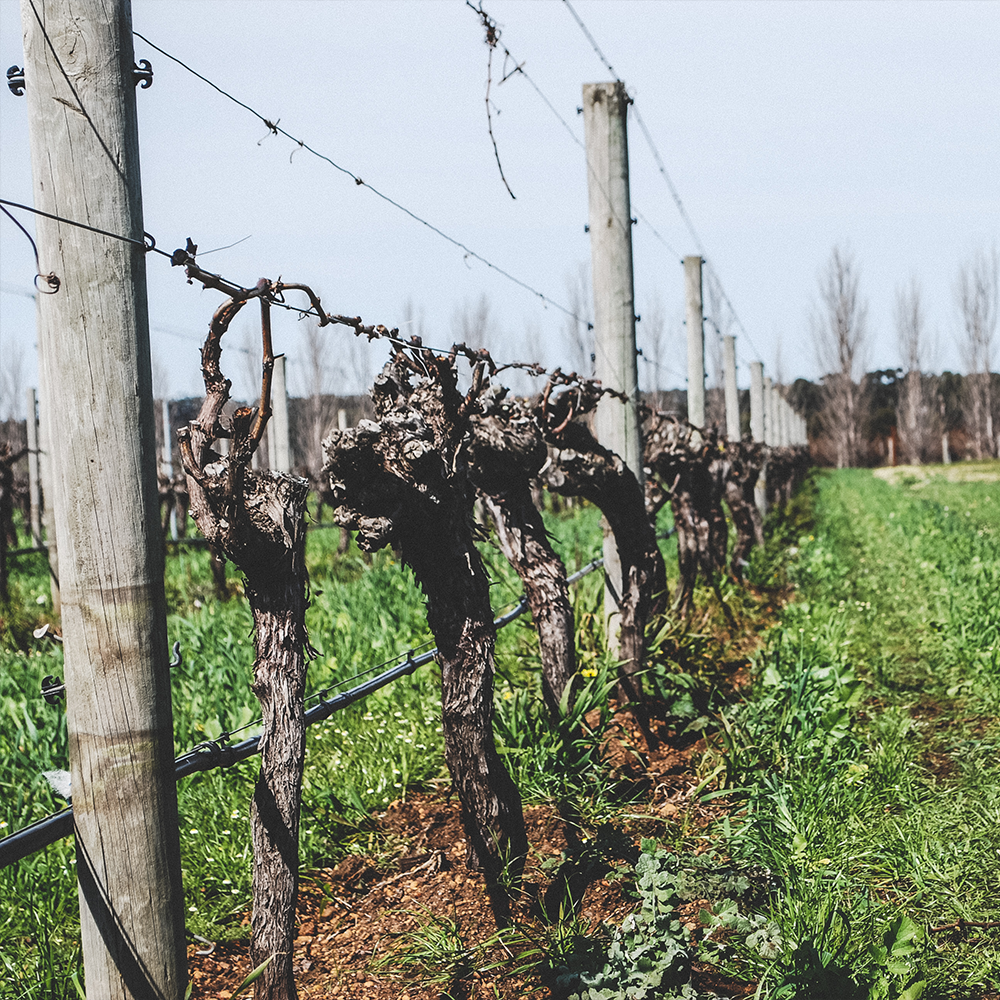THE FUTURE OF CABERNET
Our far-flung west coast wine paradise has a rich history. For over 50,000 years, the Wadandi Aboriginal people have walked this ancient land.
The Margaret River region first saw European settlement in the 1830s and evolved from a pioneer ‘outstation’ to forestry, dairy and alternative lifestylers who enjoyed the unique coast and its surfing.
The first vines were planted in the region in the late 1960s, following research by agronomist Dr John Gladstones, who determined the viticultural suitability of the area. Voyager Estate was among the founding wineries whose plantings signalled the beginnings of the wine industry in the region – an industry that would become a big player on the world stage.
Voyager’s first vineyards were planted in 1978 and this included V9 or ‘Old Block’ as it is affectionately known. This is the vineyard located on the right as you drive in our front gates. These soils have always held the perfect amount of moisture and gravel loam for growing exceptional Cabernet, and today, this block is still producing some of the best fruit on the property. However, we can’t ignore that it’s in slow decline, as happens naturally to all vines when they’ve been living for over four decades!
So, how do we preserve the legacy of our oldest premium vineyard, so that we can continue to grow, make and share our best Cabernet for generations to come? The answer lies in some viticultural ingenuity from the vineyard team…and the cult 80s movie blockbuster, Top Gun.
For the last 40 years, our team have built up an extensive knowledge of the soil and climate in Stevens Valley through organic farming practices in the vineyard and winery. This has allowed them to explore the possibility of growing a new generation of V9 Cabernet vines to carry our legacy forward.
Dubbed the Heritage Vine Project, this process involved establishing a source block of second-generation vines for future propagation material and took many years of collecting, trialling and growing.
The process started in 2015. Over two years of seasonal culling, seven individual vines were eventually selected from the existing V9 Block based on several factors including vigour, yield, berry size and vine architecture. The team were looking for the ‘best of the best’ to become mother vines for their new generation of Cabernet – an approach that came to be known as the ‘Top Gun’ philosophy. Our Technical Viticulturist, Alex Miller, likened it to “trying to fill a job vacancy from a talented field of thousands of candidates – a daunting task!”
The final test was the most important – taste. This involved hand-harvesting the grape bunches from the short-listed vines and making mini batches of wine from each of them. The wines were tasted blind by sharp palates from across the business, and interestingly, there was consensus among the tasters which vines were the most promising.
After a series of very rigorous tests over several years, three vines made the cut. These were aptly named Maverick, Goose and Slider. Healthy canes were selected from these vines to become potted cuttings and nurtured in the nursery, which is a fascinating process. The canes are buried upside down in a damp sandpit. This ‘fools’ the bottom buds of each cutting into growing roots. After a few months they are dug up and planted into pots the right way up, with the roots in the soil and the buds exposed to sunshine grow viable shoots.
A year after growing the new generation vines in pots, we planted our three new clones alongside the original Old Block (on the same nutritious gravelly loam soil as the mother vines) and named it V9Young. We deep ripped the site to help the new vines explore the soil profile, then seeded a complex cover crop of grasses, clover, peas and daikon, and installed railway iron posts.
It's been a long, hands-on process, but seven years of hard work, dedication and commitment to organics means we now have enough vine material from the Mums to plant out the full V9Young Block (that’s 30 rows and 2600 vines!).
Propagating this young vineyard ourselves instead of buying vine material from a nursery has many advantages, including the ability to ensure the process is fully certified organic and like any nursery of babies, a watchful eye. No cases of mistaken identity here!
The team have now harvested several crops of fruit from V9Young, and Chief Winemaker Tim Shand says the results are very exciting.
“We talk a lot about attention to detail and the incremental nature of things in the vineyard. It was really inspiring this year to see the tangible results of this very detailed work – where vine selection and the DNA of an outstanding site are reflected in the fruit and the calibre of the wine made. Our V9Young block is rapidly emulating its parent block, which is a testament to our exceptional vineyard team.”
So, what does the future hold? With the wine produced from this new Cabernet block looking so promising, even from such young vines, we are very excited to see how it evolves. The hope is that with time, our next generation fruit and the three new clones will become part of the ultimate expression of our Stevens Valley soils, the MJW Cabernet. Perhaps it will even become the next step in isolating one true ‘Voyager Estate clone’ originating right here in Margaret River.
